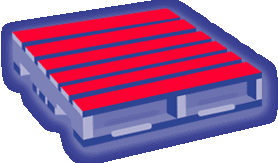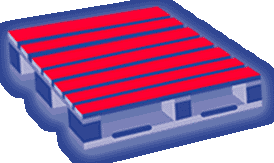



At North Star, all of our pallet styles are based on these two standard designs:
Stringer Design
The Stringer Design is the most popular style of pallet in North America. It is built for strength by having either a two-way entry, or a partial four-way entry.
The Stringer Design is the most popular style of pallet in North America. It is built for strength by having either a two-way entry, or a partial four-way entry.

Block Design
The Block Design is widely used in Europe but is quickly becoming more popular in North America, because of its unique six or nine block design. These pallets offer full four-way entry.
The Block Design is widely used in Europe but is quickly becoming more popular in North America, because of its unique six or nine block design. These pallets offer full four-way entry.










